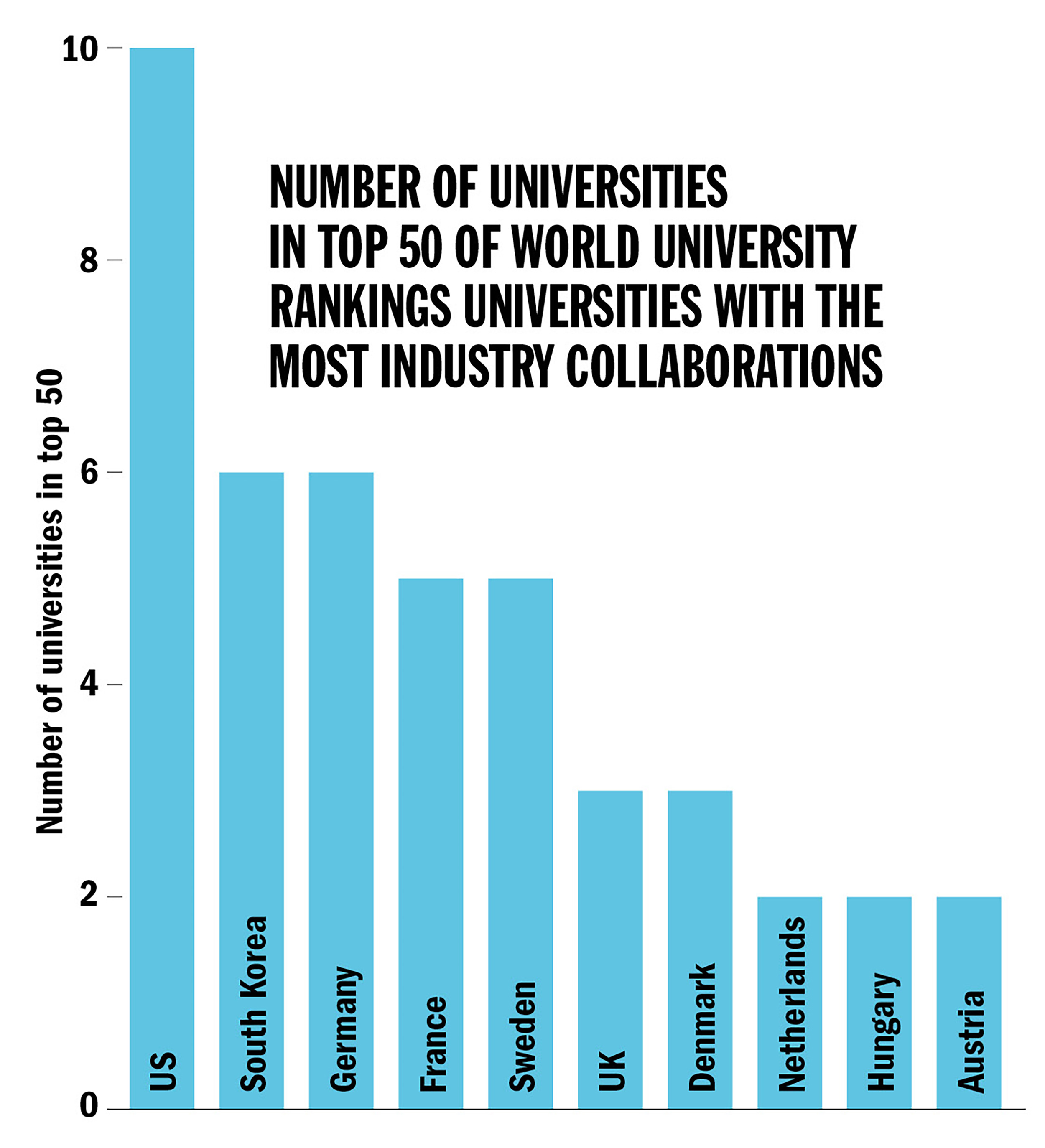France leads top 25 in science and technology ranking

U-Multirank has published its new Universities of Science and Technology Rankings, in collaboration with the Conference of European Schools for Advanced Engineering Education and Research or CESAER – a leading European group of universities of science and technology.
In total, 231 universities of science and technology are compared in the latest science and technology rankings.
The top 25 universities in this ranking come from 12 countries, with the largest cohort from France with six (Telecom ParisTech, École Polytechnique, INP Grenoble Institute of Technology, ENS Lyon, ENS Paris and Claude Bernard University Lyon 1) and five from the United States (California Institute of Technology, Massachusetts Institute of Technology, Rensselaer Polytechnic Institute, Georgia Institute of Technology and Rockefeller University).
While no university received straight ‘A’ scores (very good) across all performance indicators, many showcase top performance on a number of indicators. For example, the California Institute of Technology in the US achieved ‘A’ scores on seven out of eight possible performance indicators, while Technical University of Denmark achieved 11 out of 13 possible ‘A’ scores.
The ranking shows different profiles of universities of science and technology. While a number of institutions are placed in the top group for either all research indicators (measuring research output and impact), or for all indicators on knowledge transfer (focusing on transfer and industry relations), only one university (Georgia Institute of Technology) has an ‘A’ score on all indicators in both dimensions.
Some of the European universities in the top range of the ranking show a very strong international orientation. Technical University of Denmark, Telecom ParisTech (France), INP Grenoble Institute of Technology (France) and Chalmers University of Technology (Sweden) reached a top group position in all four indicators of international orientation.
The new ranking is also presented for nine subject areas from the field of science and technology: biology, chemical engineering, chemistry, civil engineering, computer science, electrical engineering, mathematics, mechanical engineering, and production or industrial engineering.
On the subject level, some universities achieve ‘A’ scores on all performance indicators in which data were available for them.
For example, Delft University of Technology in the Netherlands and the Massachusetts Institute of Technology in the US both received five out of five ‘A’ scores in mechanical engineering for all available indicators. When we look at computer science, Telecom ParisTech in France received six out of six possible ‘A’ scores, and EPF Lausanne and ETH Zürich – both in Switzerland – received five out of five top scores.
Chalmers University of Technology and KTH Royal Institute of Technology (both in Sweden), as well as Delft University of Technology in the Netherlands, all received six out of six possible ‘A’ scores in electrical engineering.
U-Multirank argues that by measuring university performance at both the institutional and subject level, their strengths are able to be showcased more clearly. A spokesperson told University World News that this multidimensional approach is designed to offer transparency and useful insights for students, universities, businesses, policy-makers and governments to make better informed comparisons of how universities worldwide perform.
Professor Dr Frank Ziegele, U-Multirank’s joint project leader, said: “U-Multirank understands and makes clear that universities’ roles as global centres of excellence stem from their diversity. A successful higher education sector is made up of many types of universities, especially universities of science and technology.”
He said this is why these rankings aim to show how universities of science and technology perform on a number of indicators particularly important to their institutional profiles.
The selection of indicators applied in the rankings were selected by CESAER, a longstanding partner of U-Multirank.
Universities of science and technology are doing both teaching and research. In addition, the transfer of technology and knowledge into society is a core part of their mission. Furthermore, in a global knowledge economy their international involvement and cooperation is highly relevant for their profile and performance, which is why these rankings cover the dimensions of teaching and learning, research, knowledge transfer and international orientation, Ziegele explained.
As there is no formal definition of ‘Universities of Science and Technology’, two criteria were used to identify the institutions included: 1) all institutions at which more than 40% of all graduates are coming from science and technology fields; 2) institutions with ‘tech’ in their (English) name.
In order to compare institutions with a comparable profile and mission, U-Multirank included only PhD awarding institutions.
The readymade ranking shows only institutions with valid scores on at least half of the indicators included.
Source: University World News site